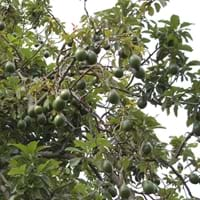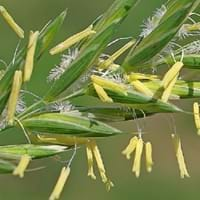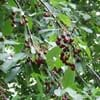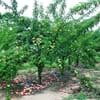Life Span
Perennial
Annual
Origin
Central America, South America
Not Available
Types
Not Available
Not Available
Habitat
Subtropical climates
Wet lands
USDA Hardiness Zone
10-15
Not Available
AHS Heat Zone
12-10
Not Available
Sunset Zone
Not Available
Not Available
Habit
Spreading
Not Available
Minimum Height
Not Available
Minimum Width
Not Available
Flower Color
White, Yellow
Indigo
Flower Color Modifier
Bicolor
Bicolor
Leaf Color in Spring
Dark Green
Not Available
Leaf Color in Summer
Dark Green
Light Green
Leaf Color in Fall
Dark Green
Not Available
Leaf Color in Winter
Light Green
Not Available
Leaf Shape
Oval
Grass like
Plant Season
Spring, Summer, Fall, Winter
Not Available
Sunlight
Full Sun
Full Sun, Partial Sun
Growth Rate
Medium
Not Available
Type of Soil
Clay, Loam, Sand
Moist
The pH of Soil
Acidic, Neutral, Alkaline
Acidic, Neutral, Alkaline
Soil Drainage
Well drained
Average
Bloom Time
Early Spring, Spring, Winter, Late Winter
Not Available
Repeat Bloomer
No
Not Available
Tolerances
Drought
Not Available
Where to Plant?
Ground, Pot
Ground
How to Plant?
Seedlings, Stem Cutting
Seedlings
Plant Maintenance
Medium
Medium
Watering Requirements
Average Water Needs
Requires watering in the growing season
In Summer
Lots of watering
Lots of watering
In Spring
Moderate
Moderate
In Winter
Average Water
Average Water
Soil pH
Acidic, Neutral, Alkaline
Acidic, Neutral, Alkaline
Soil Type
Clay, Loam, Sand
Moist
Soil Drainage Capacity
Well drained
Average
Sun Exposure
Full Sun
Full Sun, Partial Sun
Pruning
Remove damaged leaves, Remove dead branches, Remove dead leaves
Remove damaged leaves, Remove dead branches, Remove dead leaves
Fertilizers
All-Purpose Liquid Fertilizer
All-Purpose Liquid Fertilizer
Pests and Diseases
Bacterial Diseases, Dry root rot, Fungal Diseases, Red blotch
Red blotch
Plant Tolerance
Drought
Drought
Flowers
Insignificant
Not Available
Flower Petal Number
Single
Single
Edible Fruit
Yes
Not Available
Foliage Texture
Coarse
Not Available
Foliage Sheen
Glossy
Not Available
Invasive
No
Not Available
Attracts
Not Available
Deers
Allergy
Oral Allergy
Not Available
Aesthetic Uses
Not Used For Aesthetic Purpose
small hedge
Beauty Benefits
Anti-ageing, Good for the Scalp, Natural Sunscreen, Promotes healthy skin, Removes dandruff
Not Available
Environmental Uses
Air purification
Air purification
Medicinal Uses
Antidepressant, Detoxification, Digestive, Improve heart health, osteoporosis
Diuretic, Prevention of convulsion
Part of Plant Used
Fruits
Leaves
Other Uses
Food for animals, Used as a nutritious food item, Used for its medicinal properties
Used as Biofuel
Used As Indoor Plant
Yes
No
Used As Outdoor Plant
Yes
Yes
Garden Design
Edible, Fruit / Fruit Tree, Shade Trees, Street Trees, Topiary / Bonsai / Espalier, Tropical
Not Available
Botanical Name
PERSEA americana 'Reed'( Guatemalan Strain)
PANICUM
Common Name
Avocado, Guatemalan Avocado
Panicum
In German
Avocado
panikom
In Spanish
Aguacate
panikom
In Greek
Αβοκάντο
Panicum
In Portuguese
Abacate
Panicum
In Polish
Awokado
Panicum
Phylum
Magnoliophyta
Magnoliophyta
Class
Magnoliopsida
Liliopsida
Clade
Angiosperms, Magnoliids
Angiosperms, Commelinids, Monocots
Tribe
Not Available
Not Available
Subfamily
Not Available
Panicoideae
Number of Species
Not Available
Difference Between Avocado and Panicum
If you are confused whether Avocado or Panicum are same, here are some features about those plants to help you choose better. Many people think that these two plants have the same characteristics, but one can see Avocado and Panicum Information and learn more about it. Fertilizers required for proper growth of Avocado are All-Purpose Liquid Fertilizer, whereas for Panicum fertilizers required are All-Purpose Liquid Fertilizer. Hence, one should know the basic difference between Avocado and Panicum if you are planning to have them in your garden to enhance its beauty.
<
Flowering PlantsImportance of Avocado and Panicum
Want to have the most appropriate plant for your garden? You might want to know the importance of Avocado and Panicum. Basically, these two plants vary in many aspects. Compare Avocado and Panicum as they differ in many characteristics such as their life, care, benefits, facts, etc. Every gardener must at least have the slightest clue about the plants he wants to plant in his garden. Compare their benefits, which differ in many ways like facts and uses. The medicinal use of Avocado is Antidepressant, Detoxification, Digestive, Improve heart health and osteoporosis whereas of Panicum is Diuretic and Prevention of convulsion. Avocado has beauty benefits as follows: Anti-ageing, Good for the Scalp, Natural Sunscreen, Promotes healthy skin and Removes dandruff while Panicum has beauty benefits as follows: Anti-ageing, Good for the Scalp, Natural Sunscreen, Promotes healthy skin and Removes dandruff.
Compare Facts of Avocado vs Panicum
How to choose the best garden plant for your garden depending upon its facts? Here garden plant comparison will help you to solve this query. Compare the facts of Avocado vs Panicum and know which one to choose. As garden plants have benefits and other uses, allergy is also a major drawback of plants for some people. Allergic reactions of Avocado are Oral Allergy whereas of Panicum have Not Available respectively. Having a fruit bearing plant in your garden can be a plus point of your garden. Avocado has showy fruits and Panicum has showy fruits. Also Avocado is not flowering and Panicum is not flowering . You can compare Avocado and Panicum facts and facts of other plants too.





